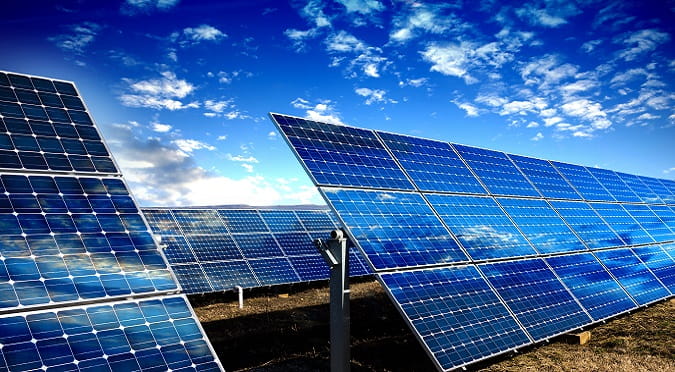Distribution and transmission operators address DER interconnection opportunities
Key Learnings from the EUCI Conference: Optimizing the Interconnection Process for Renewables & Storage
Over the summer, West Monroe co-sponsored EUCI’s Distributed Energy Resources (DER) Interconnection conference in Philadelphia. Multiple leaders of the DER interconnection process at major utilities, including PECO, Ameren, and BGE, presented their experiences managing a process with growing size and complexity. In addition, PJM, MISO, and FERC presented information on how to accelerate turnaround and the nuances in wholesale interactions that may be happening at the distribution grid. Although their experience and topics varied, we noticed several consistent trends that were top of mind to all stakeholders in the ecosystem.
Increase in Volume and Complexity of Interconnections
There has been a continued increase in interconnection applications and installations in the last few years due to DER cost decreases, new laws, incentives, and new programs/advocacy groups. The types of applications and complexity of the application process has increased due to new grid technologies. These are primarily driven by community/aggregated solar (virtual net metering), storage, microgrids, and hybrid variations (e.g. solar + storage). This growth in volume of applications has spurred more utilities (and transmission operators) to adopt interconnection software. However, not all software lends itself to modifications and customizations to handle new complexity or evolving processes.
New Technologies, New Challenges
New technologies, customer interconnection configurations, and increases in application volume and complexity have created new challenges and required different stakeholders – both at the transmission and distribution levels – to change their interconnection processes.
Distribution
Many utilities are adjusting their interconnection process to handle an increased application volume. As a result, the interconnection process has evolved from a single person to a DER interconnection organization with multiple points of review and different approval roles in a multi-disciplinary workflow. This new structure requires clear communication across both technical and business units. Additionally, there is a need to streamline the process to create clear milestones and decision points to standardize the process and keep applicants informed. There is a growing shift to dedicated software strategies to help optimize DER interconnection workflow. Many utilities leverage specialized software toolkits (e.g. PowerClerk, Grid Unity, Salesforce, and West Monroe’s own ConnectTheGrid platform), or have designed their own homegrown solutions. Interconnection software has evolved to facilitate and streamline improved workflow between multiple departments at a utility, as well as manage the handoff of applications for technical review and external communication with DER installation contractors and end customers. For example, many utilities mapped the customer journeys and developed informational brochures for their customers and DER installers to assist with the application process. One point of discussion was how much visibility in the status queue to give to DER operators and installers. Perhaps the most challenging trend for utilities, is that as certain utilities see saturation on their feeders, they need to extend the interconnection workflow to include their operational departments to validate capacity impact.
"Hosting Capacity Analysis, generally used to convey the remaining capacity to accommodate DERs on a circuit, circuit section, or node, provides strategic information to developers, customers, and the electric utility. Although it is not a substitute for detailed studies of larger systems, and generally doesn’t check for secondary loading or voltage rise issues, it can provide reasonably reliable guidance for the ability of distribution circuits to accommodate smaller DER systems."
Steve Steffel, Manager of Regional Capacity Planning at PHI, emphasized the evolution of Hosting Capacity Analysis to determine how much new DER capacity a circuit can absorb.
Transmission
As the number of interconnections and types of DERS increase, there is an added complexity for transmission operators. That’s because the ISOs and RTOs are trying to gain visibility into these new DER additions in order to perform their service on the grid. This also leads to a jurisdictional debate on which entity governs the interconnection process – federal government vs. state/local. As an example, FERC Order 841 (approved on February 15, 2018) directs operators of wholesale markets to develop market rules for energy storage to participate in the wholesale energy markets. This will serve as a starting point for utility-scale storage development and expect to see an increase in applications.
Future Opportunities
DER interconnection comes with different challenges based on the volume of applications and level of DER concentration. Managing the DER interconnection process presents a unique opportunity for utilities to improve customer satisfaction in the area of energy choice and new service provisioning as well as to interface DER data with OT and IT systems to improve visibility to DER hosting capacity. A key emerging trend is to include EV charging infrastructure into DER interconnection processes, which supports aligning EV charging to grid capacity. However, all these efforts come with new challenges to adapt to new technologies, processes, and workforce transformation. To date, utilities have worked on improving the facilitation of electronic interconnection and the process of the review. It’s not easy being green, but utilities are progressing towards a more sustainable and resilient system.


